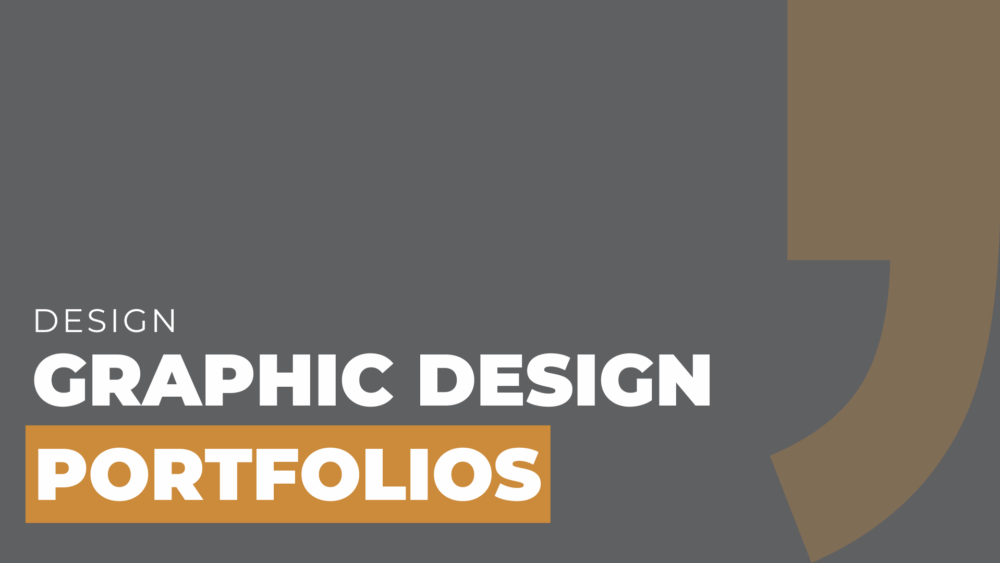If you’re just getting an education in graphic design, don’t forget your portfolio.
A graphic design portfolio is your visual resume, showcasing your best work and unique style to potential clients and employers.
Whether you’re just starting out or have been in the game for years, having a standout portfolio is essential to making your mark in the industry.
We all started out building our portfolfio once, and our team at MOCK, the agency continues to build ours.
What is a Graphic Design Portfolio?
A graphic design portfolio is a curated collection of your most impactful design projects, presented to highlight your skills, creativity, and range as a designer.
It can be a physical book, but more often today, it’s a digital website that’s accessible from anywhere, anytime.
Your portfolio should be more than just a gallery of images; it should tell the story of your design journey and what makes your approach unique.
Why Do You Need a Graphic Design Portfolio?
Think of your portfolio as your 24/7 personal brand ambassador.
It’s out there hustling for you, showing off your work to clients, hiring managers, and collaborators even when you’re sleeping.
With the industry being as competitive as it is, your portfolio is a key element in standing out from the crowd and landing that dream project or job.
How Can a Graphic Designer Balance Variety and Cohesion?
Balancing variety and cohesion in a graphic design portfolio is like walking a tightrope.
On one hand, you want to show the full range of your skills — logos, branding, web design, print work, and maybe even some motion graphics.
On the other hand, you need the portfolio to feel like it all belongs together, a single narrative that ties your work together.
One approach is to organize your portfolio by project type or industry.
For example, if you’ve worked on branding for tech startups and healthcare, separate those into different sections.
This way, potential clients can easily find relevant work while still seeing your versatility.
Another strategy is to use consistent design elements — like a color scheme or typography — across your portfolio to create a cohesive look and feel, even if the individual projects are varied.
The Role of Storytelling in Portfolio Design
Storytelling is not just for bedtime — it’s a powerful tool in portfolio design.
Each project in your portfolio should tell a story: What was the challenge? How did you approach it? What was the result?
This narrative helps potential clients and employers understand your design process and how you think creatively.
It turns a static collection of images into a dynamic journey that can engage and inspire your audience.
For instance, let’s say you designed a brand identity for a local Atlanta coffee shop.
Start with the problem the shop was facing, like needing to stand out in a crowded market.
Then, walk through your creative process, from initial sketches to final execution.
Finally, show the results, like an increase in foot traffic or social media buzz.
This storytelling approach not only highlights your skills but also your ability to solve real-world problems with design.
What Should a Graphic Design Portfolio Include to Attract High-Profile Clients?
To attract high-profile clients, your graphic design portfolio needs to do more than just look good — it has to be strategic.
Here are some key elements to include:
1. Showcase Your Best Work
- Quality over quantity. Pick the projects that truly represent your best work and leave out anything that doesn’t meet that standard.
2. Diverse Range of Projects
- High-profile clients often have diverse needs, so showing a range of work—like branding, digital design, and print—demonstrates your versatility.
3. Case Studies
- Go beyond showing the final product by including case studies that explain the problem, your process, and the solution. This is especially important for attracting clients who value strategic thinking.
4. Client Testimonials
- If possible, include testimonials from past clients. This adds credibility and shows that others have trusted you with important projects.
Remember to include a section on your website or portfolio platform where you can update your work regularly.
High-profile clients will appreciate seeing your latest projects and knowing that you’re constantly pushing your creative boundaries.
How Digital Portfolios Have Changed the Game
The shift from physical to digital portfolios has revolutionized how graphic designers present their work.
A well-crafted digital portfolio is more than just an online gallery; it’s an interactive experience that can engage viewers in ways a physical portfolio never could.
Advantages of a Digital Portfolio
- Accessibility: Clients can view your portfolio anytime, anywhere, which increases your chances of landing international projects.
- Interactive Elements: Incorporate videos, animations, and interactive design elements to make your portfolio more engaging.
- Ease of Updates: You can easily update your digital portfolio with new work, keeping it fresh and relevant.
Digital portfolios are particularly important if you’re targeting graphic design internships.
Many internship programs require a portfolio submission as part of the application process, and a well-organized digital portfolio can set you apart from other candidates.
At the End of the Day
Your graphic design portfolio is more than just a collection of your work — it’s a reflection of who you are as a designer.
Whether you’re looking to land high-profile clients or score that dream graphic design internship, your portfolio should be as dynamic and innovative as you are.
Remember to balance variety with cohesion, use storytelling to bring your projects to life, and embrace the power of a digital portfolio to reach a global audience.


Comments are closed.